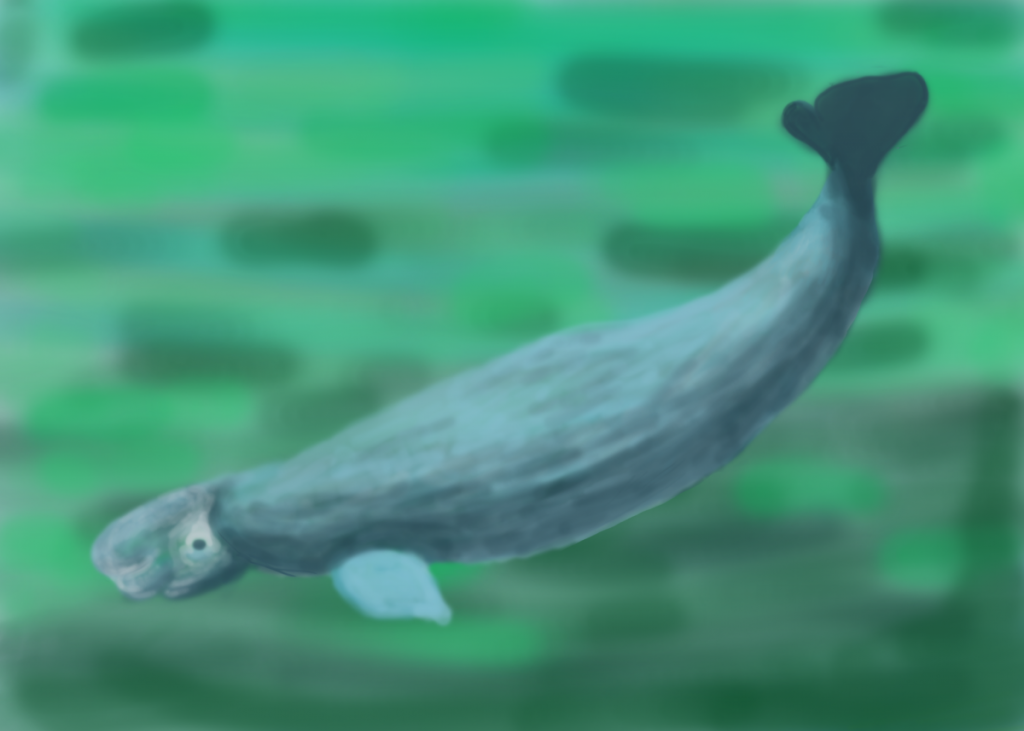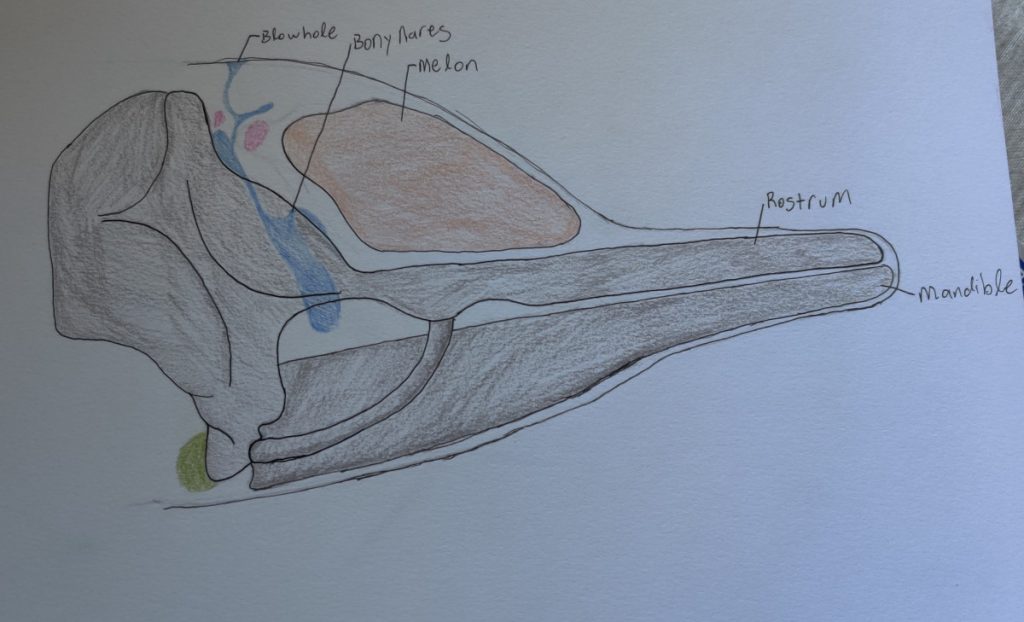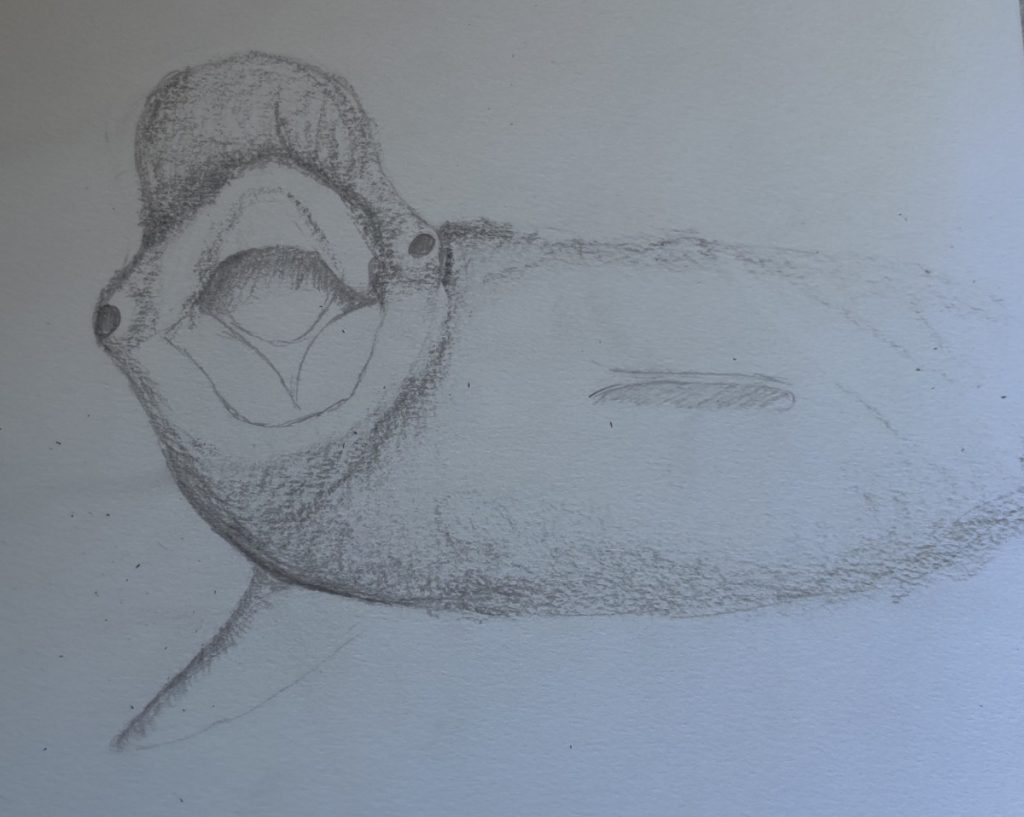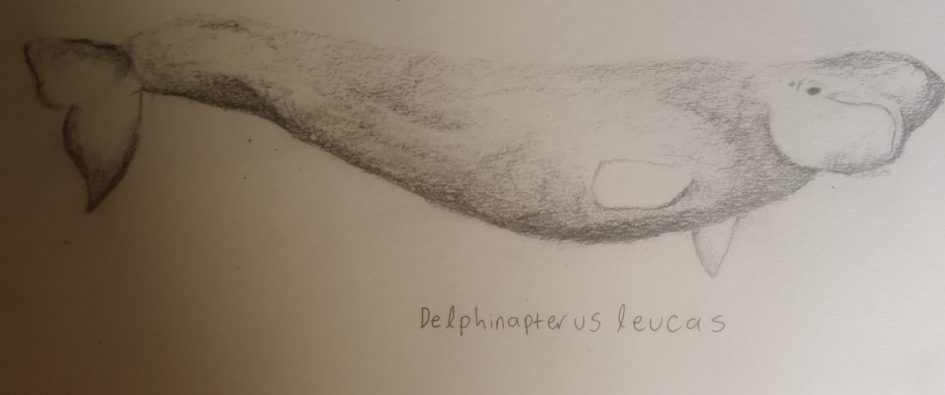Beluga whales are a sub-arctic and arctic cetacean of the family, Monodontidae, also known as white whales. They are adapted to life in the arctic and are most likely to be found in the shallow coastal waters of the Arctic Ocean, with large populations off the coast of Alaska and Northern Canada, Greenland, and Russia. They spend their winters in the open sea close to the edge of the ice pack, and migrate to coastal waters come summer, when the ice begins to melt. During summer they are known to live in estuaries and the waters near the continental shelf, occasionally swimming up rivers. Some individuals have even been known to travel up to 1,000 km from the ocean while chasing salmon upriver during their migration. Estuaries and rivers also act as a place of refuge for calves and their mothers, who are often the prey of killer whales. Belugas are the most abundant toothed whales, feeding mainly on fish such as cod, rose fish, halibut,, salmon, smelt, sole, flounder, herring, and sculpin. Invertebrates such as shrimp, squid, crabs, clams, octopus, snails and bristle worms make up a smaller, yet significant part of their diet. They are an important animal for the regulation of the abundance and distribution of these species in the Arctic Ocean.

Like most cetaceans they swim by tail propulsion, with their whole spine undulating to propel them forward. However, due to their fat heads they are generally less hydrodynamic than other toothed whales, making them slower than killer whales and bottlenose dolphins. Beluga whales are often found swimming with bowhead whales because bowheads have the capability to break ice from underneath by headbutting, thus securing polynya for the belugas, whose fatty melon makes this act impossible. When compared with dolphins, their eyesight is relatively poor, though the presence of rods and cones in their retinas indicate that they can see color and have some vision capabilities in low light. Adapted mainly for seeing underwater, when their eyes come in contact with the air, their crystalline lens and cornea adjust to compensate for myopia, meaning they have the ability to see fairly clearly both in and out of the water. Their most acutely developed sense is their hearing as they have a large portion of brain functioning dedicated to echolocation.

They have a large fatty melon on the front of their head which acts as an acoustic lens to gather and focus sounds from the environment. They produce sequences of clicks and high pitched beeping noises which travel throughout the environment and reflect back off of objects, which they then can use to create a rich acoustic interpretation of their environment. This is incredibly useful as they spend much of their time underneath large ice sheets where no light can get to, so their eyesight is of no use. Their highly developed auditory cortex indicates that much of their brain functioning is dedicated to this acoustic interpretation of the environment.

Umwelt:
As a beluga whale, I spend much of my time in the pitch black waters underneath arctic ice sheets, searching for yummy fish and shrimp to eat. I cannot see very well, even when there is light, but this does not bother me much, as I think visuals are quite overrated. I hear. That is how I construct a vision of where I am. I click and I squeak, sending out rapid sequences which bounce back to me. I can sense the objects around me based on how long it takes for these clicks to come back to me. All of these noises are brought together by the melon on top of my head and focused into information that my brain can interpret. I close my eyes, and based off of the sounds alone I construct a picture of my environment inside my head. It is much different than the mental construction that is founded off of light and eyeballs because all that can be wrought from the sounds are outlines. I see no textures and no colors when I build acoustic environments, but only a vibratory outline that tells me what’s static, what’s moving, and, most importantly, what is food. When I hear the softened clicks that bounce off of the skin of a halibut, I know what direction to swim, and I do. When I hear the clear and concise clicks bouncing off the ice, I know where not to swim, because that would be very cold and hard, think a tongue on a frozen pole, but with my whole forehead. I love fish and I am curious about humans, but they killed my uncle BRRWSJJUAKK for the lubricant in his melon, so they also scare me quite a bit. I hope to better understand these strange terrestrial brethren someday, but for now I will just steer clear.
Written from the perspective of Delphinapterus leucas, as imagined by Homo sapien, Josiah Palmer.
Hill, Heather M., et al. “Individual Differences in the Behavioral Characteristics of Beluga Whales (Dephinapterus Leucas).” Behavioural Processes, vol. 166, 2019, p. 103885., doi:10.1016/j.beproc.2019.06.008.
Stafford, Kathleen, et al. “Seasonal Acoustic Ecology of Beluga and Bowhead Whale Core-Use Areas in the Pacific Arctic.” The Journal of the Acoustical Society of America, vol. 141, no. 5, 2017, pp. 3939–3939., doi:10.1121/1.4988919.
“Beluga Whale (Delphinapterus Leucas).” The Western Arctic Seas Encyclopedia, 2017, pp. 58–59., doi:10.1007/978-3-319-25582-8_20023.
All of the information, illustrations, and animations in this post may be used by any persons for any reason without the need for credit given or source cited. If you decide to take credit for this work for any reason, including monetization, that is your karma, own it. If you decide to give credit to the artist, much thanks. Peace and love to all beings, may all be delivered from suffering.

